
Dragon Age: The Veilguard Review
"Dragon Age is back." I never expected that I'd have to wait so long before being able to say that sentence again, but I can now, thanks to Dragon Age: The Veilguard, BioWare's continuation of the series. It comes out nearly a decade after Dragon Age: Inquisition, and while the game's long, protracted, and by all accounts very rough development period shows all over The Veilguard, the end I came away with the feeling that almost in spite of itself, The Veilguard is a worthy follow-up to its predecessors, at times reaching some all-time series highs.
The story of Dragon Age: The Veilguard begins by picking up a thread from the conclusion of Inquisition's final narrative DLC. Solas, a former Inqusition party member and the ancient elven god known as the Dread Wolf (which also happened to be The Veilguard's original title) is poised to pretty much destroy the world by taking down the Veil, a mystical barrier separating the material realm from the Fade, a dimension of dreams and raw magic.
But rather than pick up the story right where it left off, with the Inquisitor vowing to chase Solas into the at-the-time unexplored reaches of northern Thedas, The Veilguard seems to allude to the fact that just thinking about Dragon Age: Inquisition almost feels like recalling an entirely different era. So much has happened in the world at large (and for BioWare itself) in the last decade, after all. Instead, the story actually begins almost nine years after that cliffhanger reveal, with Varric and "Rook," the entirely new, player-created protagonist, chasing Solas down right as he's about to pull off his big stunt. Disrupting Solas' ritual, unfortunately, frees a pair of elven gods even worse than the Dread Wolf himself, setting into motion a crisis that requires Rook to form an elite-but-ragtag team to save the world.
And it's very much a "team" rather than an army or a faction. In several key ways, Dragon Age: The Veilguard is a much smaller-scale game than Dragon Age: Inquisition, despite having a largely similar structure. You still gather your party and venture forth from your base into the world of Thedas, which is represented by a handful of large, explorable zones that serve as the staging locations for most of the game's quests and story scenes.
But where Inquisition put the player at the head of a growing organization that eventually reaches a position of global significance, a power in its own right, The Veilguard deliberately keeps the circle small. Rook isn't a leader of armies, but a figure that makes things happen alongside their best buddies, a found family of eccentrics and ne'er-do-wells that, in my opinion, is among the best to grace a BioWare game.
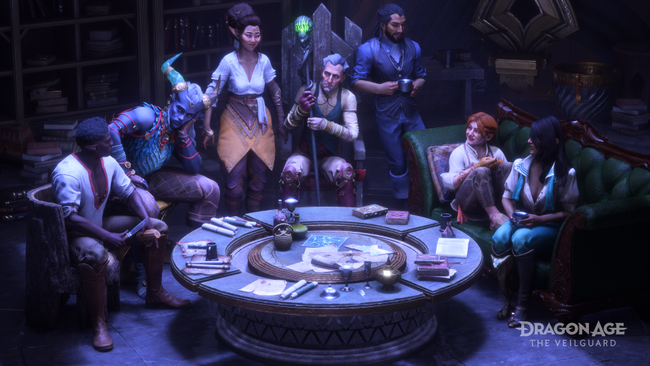
As with many BioWare titles, the cast is the real highlight of Dragon Age: The Veilguard. Every member of the team is memorable and interesting. Davrin is a Grey Warden and expert monster hunter, but forced by circumstance to become something of a reluctant dad to Assan, one of Thedas' last Griffons. Neve is a sharp-witted, cynical detective working to better the lot of Tevinter's poorest residents. The posh professor Emmrich is an expert necromancer with a skeleton butler, while Bellara is a curious, chirpy tinkerer with a talent for manipulating ancient elven devices. Lucanis struggles with an otherworldly presence in his own mind, but remains Antiva's deadliest Crow assassin. Harding, a former Inquisition NPC, brings an earnest curiosity and dwarven girl-next-door charm to the crew. Taash is an expert dragon slayer with a chip on their shoulder - whether that's due to being a Qunari living apart from their Qun religion or their life as a Rivaini pirate is something for Rook to explore.
A strong sense of personality imbues every aspect of Dragon Age: The Veilguard, making it one of BioWare's most character-centered games. It's reflected in the way the team's rooms start out as empty spaces in the Lighthouse (the game's extradimensional home base), but gradually grow more detailed, reflecting progress in both the main story and each companion's growth and personal journey. It's in the way each member of the team happens to be affiliated with the factions Rook allies with throughout Thedas, adding their personality to the character of the game's different factions. It's also of a piece with the requirement to affiliate Rook with one of those factions at character creation, giving The Veilguard a sense of anchoring and a personal stake in the game's events.
This comes into play in the game's reactivity, where the decisions Rook is forced to make can be influenced not just by the player's whim but by their own chosen background. Despite being set in regions never before seen by most Dragon Age players, Dragon Age: The Veilguard manages to make some of its major decisions feel truly wrenching by connecting their consequences to both the protagonist and the characters directly.

It's also in the conversations and reactivity that that sense of personality and character permeates the game. Visually, The Veilguard might be the best-looking Dragon Age has yet been. Throughout its history BioWare has struggled to define a real look for the series, moving from the bloodstained brown-and-gray of Origins to the sharp-edged look of Dragon Age II to Inquisition's glossy realism. The Veilguard embraces the fact that Dragon Age always seemed more "comic book" than its more literary inspirations first implied, choosing a colorful, more stylized approach to character and environment design both. On the whole it's a bit "cartoony," but also makes the characters pop, lending them an expressiveness that drives their performances and stories home.
In both the banter that plays while walking through the open zones and in more in-depth scenes back at the Lighthouse, the cast converses with each other and with Rook, reacting to major plot movements as well as the progress in each others' personal stories. As much as I like them, BioWare games tend to be solipsistic to a fault, often giving the impression that the whole universe revolves around the player protagonist's reaction, every character waiting for the hero to have their say. Of all the BioWare games I've played I feel like The Veilguard gives the best attempt yet at making the game feel like it's about the whole team, and not just being about "The Protagonist and Friends."
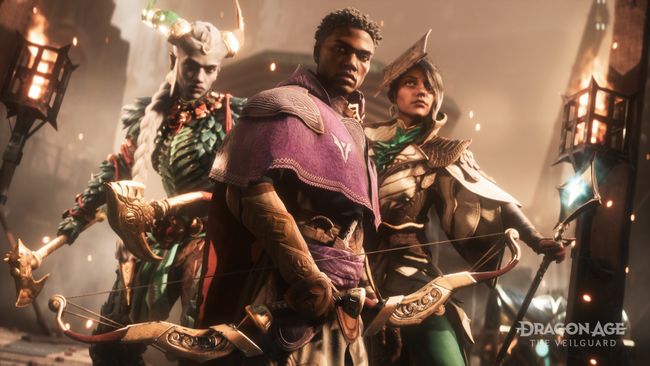
Having said all that, the The Veilguard isn't necessarily an exception to that rule, as it is still very centered on the player as Rook. In fact, it's so centered on Rook that Rook is the only character you directly control. The game's combat is now far away from Dragon Age's original roots as a tribute to the days of Baldur's Gate and the quasi-strategy framing of early PC RPGs. Instead, it's a real-time character action game, more closely related to the likes of Final Fantasy XVI and Dragon's Dogma. Players can choose one of three core classes (Mage, Warrior, and Rogue), and work towards one of three specializations that define their overall combat style within the class.
Your abilities in combat are unlocked by picking Skills off a branching skill tree as you level (or gather skill points from certain environmental minigames), with each node representing a different improvement for existing abilities. One node might improve every ability of a certain type, while another might increase the overall damage you do of a certain element, and another might give you passive bonuses when wearing a certain class of armor (players can wear any armor type).
My Rook was a Mage, and though I could rearrange my skill choices freely anytime outside combat, I found the most joy fighting as an Antivan Crow Spellblade, weaving in and out of melee range and hammering baddies with my elemental focus before detonating a chain of Arcane Bombs to instantly delete their defenses and health. When the mood struck, though, I'd occasionally slip into the Shadow Dragon Evoker specialty, blasting enemies from afar with blizzards and salting the earth they stood on with a dose of Necrotic magic taken from the Mourn Watch Death Caller's side of the skill tree. Companions get a similar version of the tree, but much more simplified, and tied to their bond level and personal stories. Though the game takes pains to establish the members of the Veilguard as distinct characters in their own right, as elements of gameplay they're strictly enablers for Rook's combat prowess.
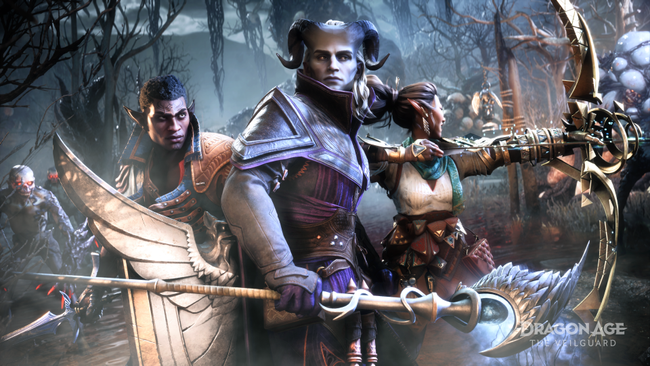
This eye towards customization and relatively free-form progression is also helped and sharpened by some smart itemization. Where I've found a lot of RPGs struggle to make the gear grind feel genuinely meaningful, The Veilguard makes every piece of gear potentially build-changing. Every gear piece has a rarity tier, ranging from Common to Legendary. While gear upgrades performed at the Lighthouse can increase the raw stats of a gear piece, upgrading rarity by finding or buying duplicates of that piece of gear is the real kicker.
Rarity upgrades unlock perks that are listed on the item's info card, and these perks can be tremendously powerful at higher levels, offering seemingly game-breaking advantages for players willing to build around the right combination of pieces and perks. There are also named unique weapons and gear pieces that can't be upgraded, but offer some unique twists (and other risks).
The Veilguard also has some clever in-game economics at work. You rarely have enough gold on hand to purchase everything you want, so you're pressured to spend wisely and choose carefully rather than clean out a store. And selling "valuable items" (i.e. junk) to faction vendors is also one of the main ways to strengthen Rook's allies for the fight to come, so there's also an incentive to choose wher e to sell one's after-mission loot to.
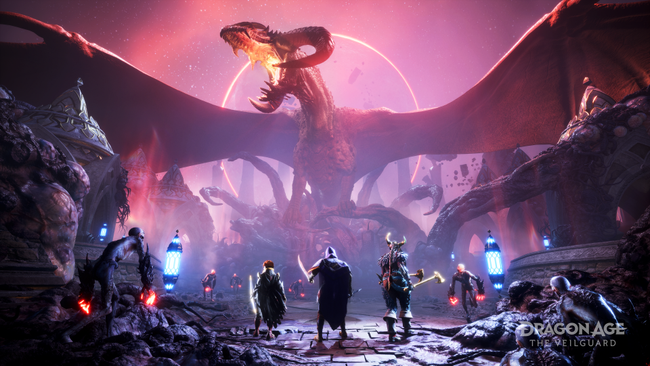
I've said mostly good things so far about Dragon Age: The Veilguard, and I mean them all. I really like the game, and believe that at a base level some of the ideas and flourishes it presents, when they soar, are the strongest ones I've seen not just in Dragon Age but in in any BioWare game to date. This makes it all the more frustrating that they're weighed down by the gravity of any number of minor frustrations or failures to fully execute on them.
The combat fundamentals are decent and varied, but the game has serious issues with readability and control. Animations often feel a frame or two too slow or overcommitted, and attention markers for being hit are often very hard to read in the visual chaos of the attack effects. The game's lock-on is also unconscionably slippery, often losing tracking when an enemy moves past rook (as they'll often do thanks to their exaggerated wind-up animations and long travel distances). It's far too easy to whiff a spell, often fouling up an attempt to set up one of The Veilguard's satisfying Detonation maneuvers.
While the skill trees themselves are interestingly designed and meaningful, the progression turns out to be flatter-feeling than it needs to be, without enough points available to pick up certain abilities without forgoing picks that would otherwise feel "critical" to any given build. In a similar vein, though it's great that I can respec and refund all of my abilities and my party at any time, the need to pick every skill manually means changing builds to suit different threats or work with different party combinations can be a time-consuming chore, as one refunds and reselects every point pick. My kingdom for the ability to save and set up loadouts for equipment and skills.

Though each class has many and varied skills to choose from and very satisfying build potential, there simply aren't enough worthwhile enemies to use all these skills on. Encounter design in The Veilguard is very limited, with basically one or two distinct mechanics per enemy type that never changes. It doesn't help that the vast majority of quests are extremely simple and linear in structure.
As I played the game for review, I considered writing a walkthrough that was "spoiler-free," but I realized as I reviewed my notes that with narrative spoilers removed, entire quests boiled down to "Follow the marker, and after the fights, have a conversation." And while the various large exploration zones are visually distinct and fun to move around in, actually navigating them is a chore because the minimap doesn't name any of the map regions or mark most shops, leaving you to guess where, say, the the markets are based on their shape on the map.
Similarly, though the character stories and the main narrative are among the best of Dragon Age (and in spots, the best of any BioWare game), the pacing is all over the place. Some lines in quests and don't seem to line up with what just happened. Lore entries in the codex will refer to characters that haven't even been introduced yet or refer to future plot events too early. Some quests will introduce you for the first time to mechanics or concepts you've been aware of and using for hours already. Some of the game's most pivotal lore drops are sequestered into an optional side quest that's extremely easy to miss, but is also possible to complete before you've even gotten to the game's second act.
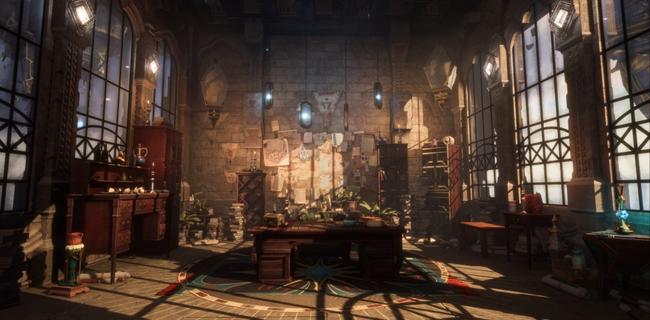
At tht risk of speculating, it's in these frustrations that I get the most vivid impression of the Dragon Age: The Veilguard's long and messy development. The seams and rough edges feel like the result of the development team at least in part rearranging and adapting existing work and ideas to suit the game's vision, but lacking the resources or ability to make them shine as they should.
But though it's ultimately held back its shortcomings, the other highs of Dragon Age: The Veilguard - its characters, its storytelling, and its sense of personality - make the game easy to like despite the flaws. The issues may be harder to look past for some, but others will find joy in the things it does do well.